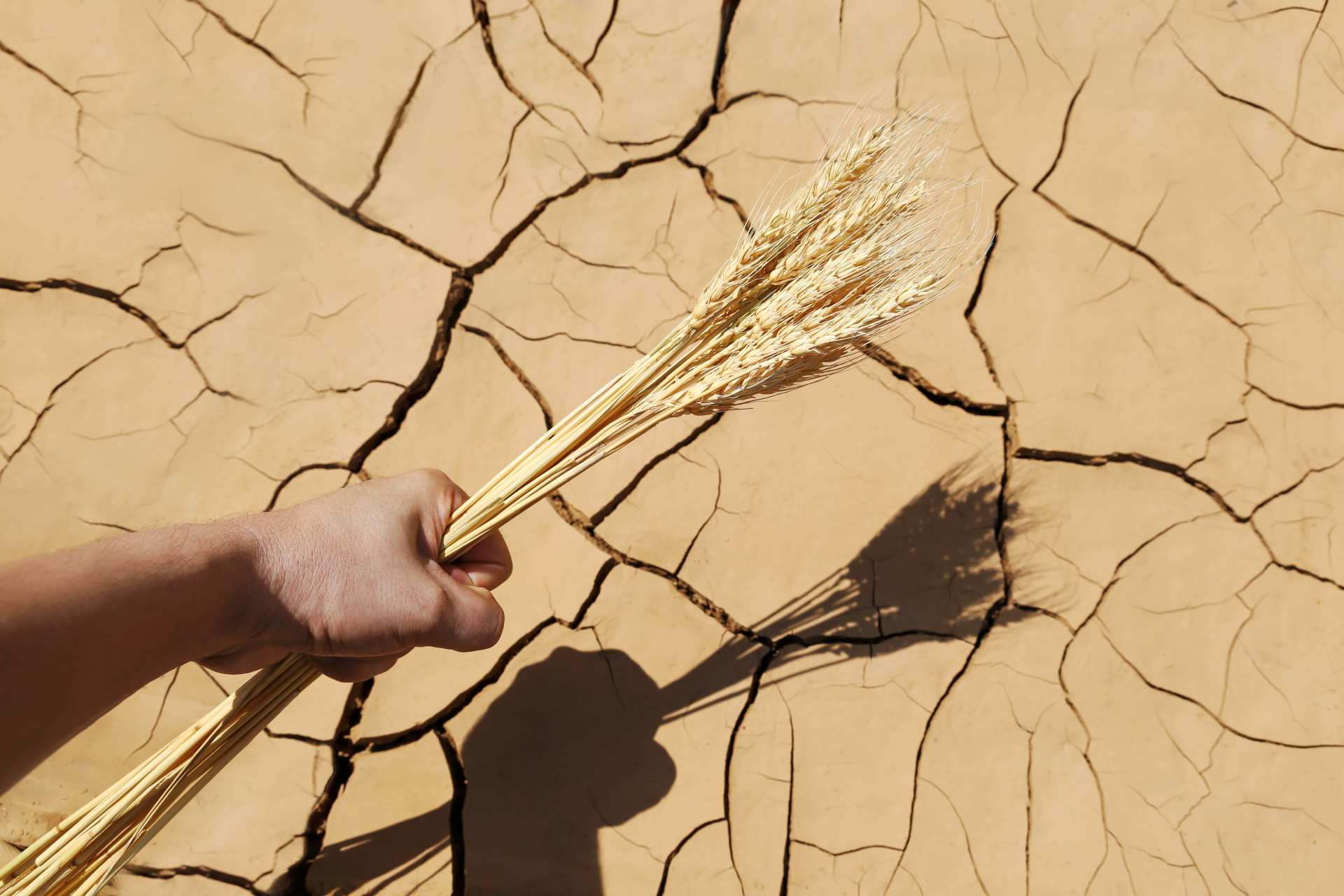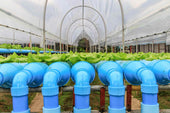Global Food Crisis: All About Food Insecurity

If we were to consider the population of more than nine billion people in less than 40 years —can we sustain the increasing food needs?
We have sufficient food for roughly seven billion people alive today. Yet, almost a billion people are also hungry or malnourished, generally because of poverty and unequal food distribution.
According to its definition, food insecurity is the lack of a reliable food supply for a functioning and healthy life. Several individuals worldwide experience the ill effects of a food deficiency and can't determine whether they can feed themselves the following day or by the end of the day. This is the premise of food insecurity.
In 2018, for instance, one in nine Americans experienced food insecurity. That is equivalent to thirty-seven (37) million people, over eleven (11) million of whom are children.
Hunger and food insecurity are closely related, and it is reasonable to say that when someone is food insecure, they will likely be hungry. Hunger leads to poverty and illness, and individuals living below the poverty line experience food insecurity; those above the poverty line may also encounter it.
Food insecurity is alarming because it is not an isolated phenomenon. This indicates that low-income families may face various overlapping issues, such as social disconnection, severe and persistent health challenges, a lack of affordable housing, low wages, and high medical costs. These factors can contribute to food insecurity and vice versa, making the situation more complex and dangerous.
After all, food insecurity is a social determinant of health, and while addressing the viable reactions to food insecurity, these difficulties must also be addressed.
This article will discuss the causes, effects, and solutions to food insecurity and end this global food crisis for good.
The Causes of Global Food Crisis

Before anything else, it is important to know the causes of food insecurity and solve them one by one:
Inaccessible Farm Lands
Food is developed or produced from the land. In doing so, income is likewise produced. Nonetheless, many individuals don't have their property or don't have the money to have farmable land.
Land ownership reinforces farming efficiency, allowing farmers to produce various food crops on a limited scale. However, a key resource for producing food crops is lacking, and farmers cannot access farming land.
Land Grabbing
Not too far from the point apprehended above, land grabbing is when land customarily owned or cultivated by family groups or communities is detracted from them by huge financial investors or powerful government officials.
With this, they obtain the land to extend their domains, remove regular assets, or even develop food for exportation. Land grabbing denies neighborhood networks of resources they frantically expect to develop food crops and vegetables for survival. A definitive result is poverty and social instability, which diminishes food insecurity.
Conflict, Violence, and Wars
Conflicts, wars, and violence, which affect food production and supplies, are other causes of food insecurity.
Food insecurity is extremely high in many nations where nationwide conflict has long been common. To illustrate this better, let's consider Syria's horticultural production, which the conflict has unfavorably impacted.
As per a report by FAO in October 2018, 5.5 million Syrians face food insecurity, and some portion of it is because of the conflict. Struggle-related food deficiencies can set off long periods of food emergencies regardless of whether the conflict has ended.
Rapid Increase in Population
In today's world, we face a daily reality where the rates of deaths are tighter than the rates of birth. The developing populace implies there are additional mouths to feed daily. The rapid increase in the population, with restricted development in the available food, implies an expansion in food insecurity.
Biofuels
Agrofuels are produced from plants like corn and sugar cane. The creation of such biofuels is a reaction to climate change. On the downside, farms will be redirected to developing such plants and yields for biofuels, diminishing the number of grains accessible for food.
This likewise drives up the costs of such grains. The developing interest in biofuels is likewise responsible for the expansion of deforestation in nations like Malaysia and Indonesia, further compromising food security.
The justification for this is deforestation clears terrain and causes climate change, which causes flooding and severe climates, thereby annihilating crops.
Natural Disasters
The dry season (or drought), floods, tropical storms, cyclones, and other catastrophic events can wipe out a whole harvest or damage crops. These events have devastating effects, most particularly on rural communities and families, who, by and large, depend on such harvests and staple limited-scope farming for their everyday food.
Climate Change
Climate change has impacted farming and agriculture on a very basic level. Farmers are experiencing the impacts of environmental change, as rains are coming in sooner than before, and droughts are lasting longer.
Freshwater is likewise more difficult to find due to rising ocean levels, storm surges, typhoons, and other extreme climate events, frequently occurring in intensive patterns.
Food Waste
Billions worth of edible food are being discarded regularly, for the most part, in developed nations.
For example, during this COVID pandemic, ranchers and farmers discard billions of food sources since restaurants and various supermarkets that recently purchased such food are closed down.
Consequently, production levels are higher than consumption, resulting in food being discarded, even as people in developing countries are dying from hunger.
Capitalism of Food Systems
Many big multinational agribusinesses and exporters have dominated the food market, meaning limited-scope farmers have restricted avenues to showcase their produce. They, thus, sell at unreasonable costs, and the giant corporations control the market, including selling food at exorbitant costs by focusing on clients who are more often than not over-particular, prompting food wastage.
Moreover, food has become a valuable commodity exchanged in international business sectors. Price hikes in worldwide food markets trigger extreme and prolonged food emergencies.
Thus, this suggests that market demands and the relentless pursuit of greater profits may largely drive hunger and food insecurity.
The Effects of Food Insecurity

Now that we've discussed the causes of food insecurity, let's take a look at how it affects millions of people daily:
Children Malnutrition
Children who lack proper food resources or come from families that are food insecure are bound to require hospitalization and are at a higher risk of chronic health conditions like paleness and asthma. Moreover, children additionally have frequent oral health problems.
Food insecurity among children is likewise associated with poor physical quality of life. It hinders them from engaging in everyday school exercises and social interactions with peers.
Hunger in Food Crisis
Hunger can likewise result from food insecurity. Hunger costs billions annually, with the US utilizing about $178.9 billion annually. This causes the public authority to spend more on feeding and caring for the country's food needs rather than concentrating such monies on different undertakings like infrastructure, healthcare services, and education.
Increase in Food prices.
Food insecurity implies a lack of food commodities, making accessible food costly. This means the costs of related items will increase. The public's access to food, care, feeding, and medical services may likewise become restricted, making the country more insecure.
Health Problems
In simple logic, the higher the rate of food insecurity, the higher the risk of developing chronic illnesses like heart disease. This puts pressure on the front medical liners and entire healthcare systems. In a review, food-insecure families spent about $6,100 on medical care in a year, compared with $4,200 for food-secure families, a 45% cost expansion.
Violence Amidst Food Crisis
As mentioned above, violence can cause food insecurity. However, it can also be the other way around, as food insecurity can result in violence. Food insecurity, particularly when brought about by increased food costs, is dangerous and results in vicious struggles. It probably won't be the main source.
However, combined with different variables, for instance, in political or monetary circles, the food crisis could be the element that decides if and when violent struggles take place.
The Solutions to Global Food Crisis

With all those causes and effects done, how do we move forward and resolve this issue to achieve food security?
Reduce Food Waste
Food waste is large because of wasteful arrangements, uneven or bad streets, over-particular clients, and deficient storerooms. On the off chance that storerooms are improved, and there are satisfactory arrangements for how the food will be utilized, less food will be put to waste, and there will be a more food-secure local area.
Reduce the Risk of Commercializing
Food insecurity levels will decrease if food is developed to feed the local area or country. Farmers can grow more food crops and will want to deliver cash crops when sufficient food crops are available.
Moreover, if food is adequately available in the market, there will be less risk of commercialization. State-run administrations should likewise implement programs that allow farmers to know when there is enough food for everyone.
Improve Existing Infrastructural Programs
A few farmers fail to get their produce to the market due to poor infrastructure, including streets, storerooms, and food handling equipment. The produce ends up decaying in the homesteads and then being taken to the people who need it or for processing. If the infrastructure is improved, more food will be accessible on the market, and food insecurity levels will decrease.
Improve Trade Restrictions and Policies
A few farmers fail to care for the local area because of uncalled-for trade policies. Big corporations have previously stepped in and commercialized food, making it harder for limited-scope farmers to have their items on the market. In this case, the government should work on implementing and strategizing policies to make it fair for everybody to participate.
Promote Diversification
Zeroing in on a single food crop or staple can deliver disastrous results in reducing food insecurity. Thus, proper training on the importance of diversified and healthy diets for better nutrition should be provided to further develop food security. With additional food varieties and an informed local area on the significance of a diversified diet, adequate staple food varieties will be accessible in the business sectors.
World Food Programme: Global Food Security
The World Food Programme is the leading humanitarian organization fighting hunger worldwide. It delivers food assistance in emergencies and works with communities to improve nutrition and build resilience.
The program supports more than 91.4 million people across approximately 83 countries. This initiative demonstrates that the international community has finally prioritized ending hunger, achieving food security, and enhancing nutrition by 2030.
One in nine individuals lacks access to adequate food, and food and food-related assistance lie at the core of the struggle to break the pattern of hunger and poverty.
On any given day, WFP has 5,000 trucks, 20 ships, and 92 planes progressing, conveying food and other help to those most in need. We convey more than 15 billion proportions at a typical average expense for each proportion of US$ 0.31.
These numbers lie at the underlying foundations of WFP's unrivaled reputation as an emergency responder, one that takes care of business rapidly at scale in the most troublesome conditions.






















































